Massive wildfires are currently sweeping across northern and eastern Iberia. A mix of harsh climatic conditions and questionable policymaking is reducing thousands of hectares of forests, grasslands, croplands and villages to ashes. Jorge Verdú, Darío Gijón and I camped at Picos de Europa National Park — the first-ever protected area in Spain —, eager to connect with some of the local specialties among beech forests and alpine grasslands. However, the valleys and gorges we drove through were shrouded in an opaque smog that filtered the sunlight into orange tones and filled the air with a deep, unpleasant smell.
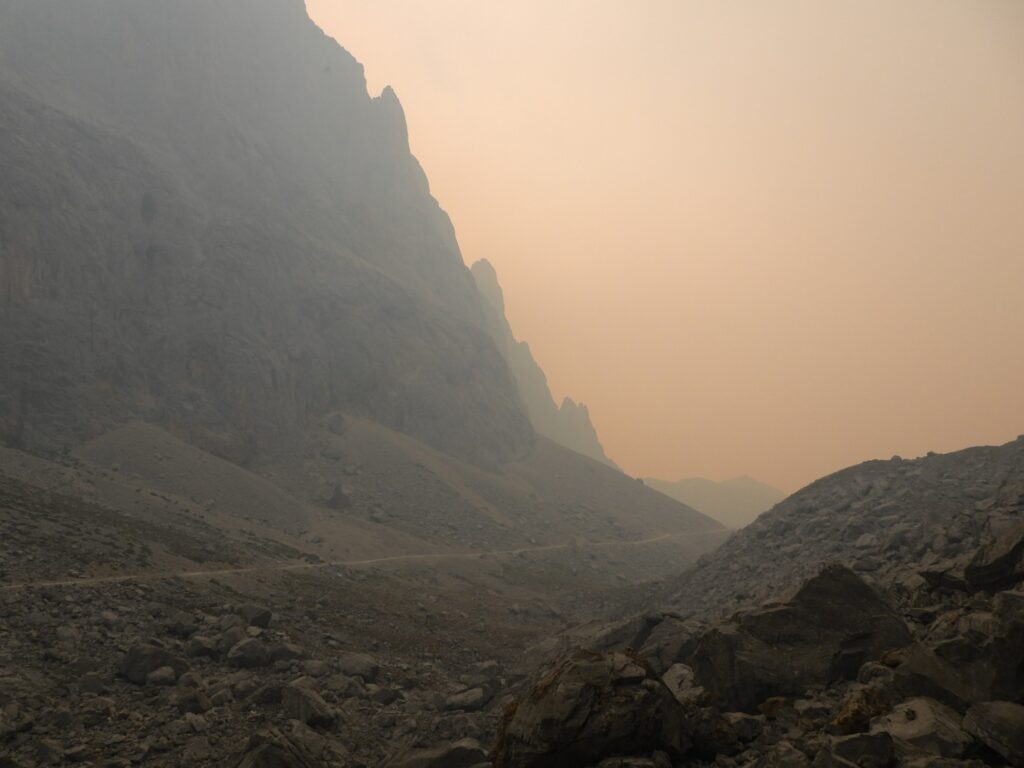
A large wildfire was raging just a few slopes south, beyond the edge of the park. The smog grew more intense overnight, and by the next morning — when we took the cable car uphill from Fuente Dé, about 750 m above the valley — it was especially heavy. Hopefully, the hues in the pictures that accompany this post will help convey the extent of the ashes in the air. The fire may have been distant, but it was impossible to ignore.
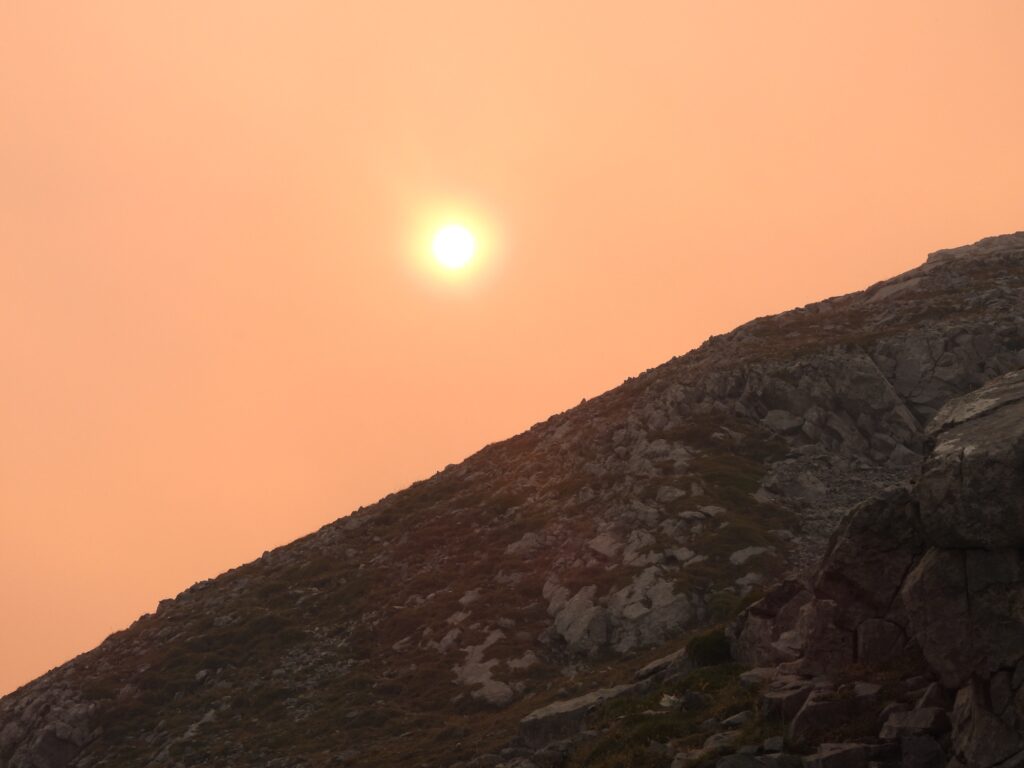
I had visited the area six years earlier in spring. The once bright-green grassy slopes were now withered and brown, but it was the smog’s orange glow that really gave the atmosphere a harsh, oppressive feel. Visibility was terrible when we reached the top station at 08:30, and it hardly improved once the sun rose above the mountains. Not the best conditions for wildlife watching — but eventually, our targets obliged.
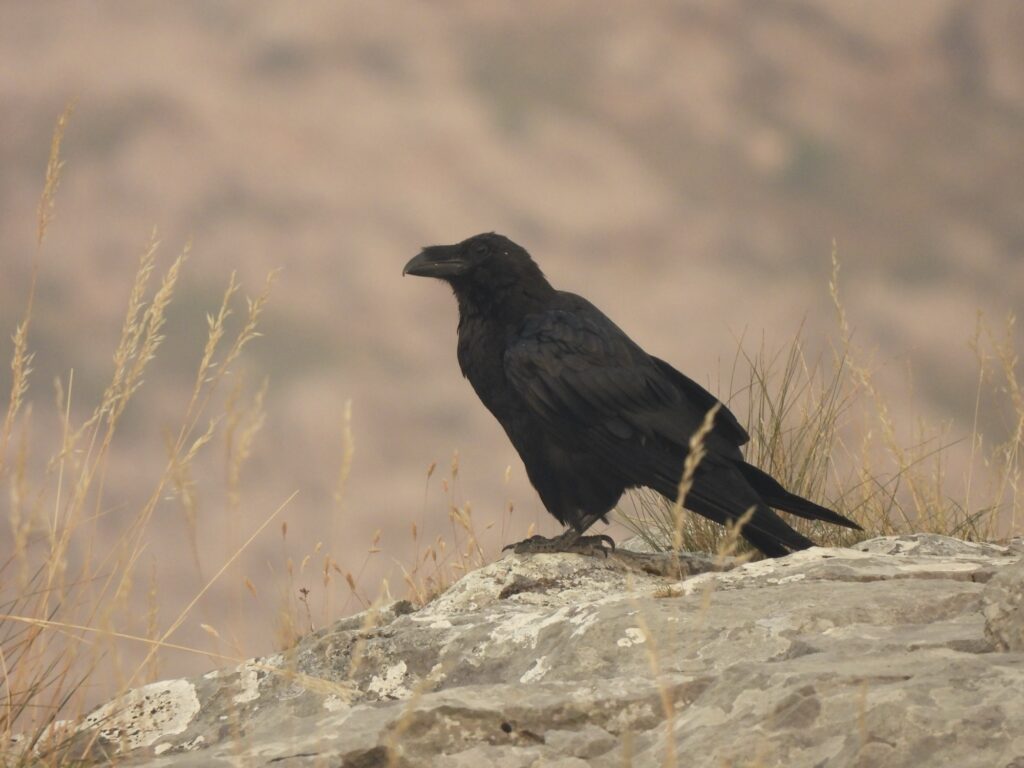
Herds of chamois (Rupicapra pyrenaica) were first seen in the distance through the smog, browsing for fresh herbs, as were some groups of goats. Flocks of corvids flew overhead, including ravens (Corvus corax), red-billed choughs (Pyrrhocorax pyrrhocorax) and a local target, the yellow-billed chough (Pyrrhocorax graculus). Different raptors also caught eye on us, including large numbers of griffons (Gyps fulvus) and the odd Egyptian vulture (Neophron percnopterus) and migrating short-toed snake eagle (Circaetus gallicus).
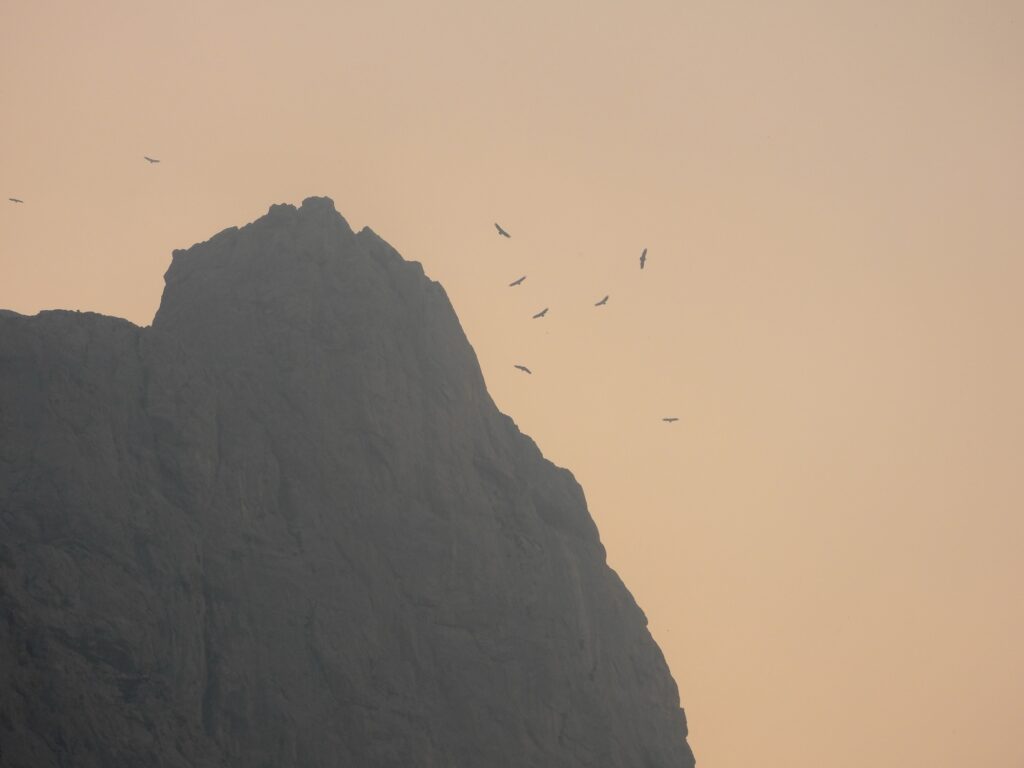
Smaller passerines were also present. We came across several northern wheatears (Oenanthe oenanthe), water pipits (Anthus spinoletta) and flocks of linnets (Linaria cannabina). Some birds were in full parenting mode, busily searching for food to feed their hungry fledglings. This was especially true of the many black redstarts (Phoenicurus ochruros) we saw along the path. As we followed the main path from the station towards Horcados Rojos, we were glad to bump into a couple of young common rock thrushes (Monticola saxatilis), a high-mountain specialist and migratory species that is always a joy to find.
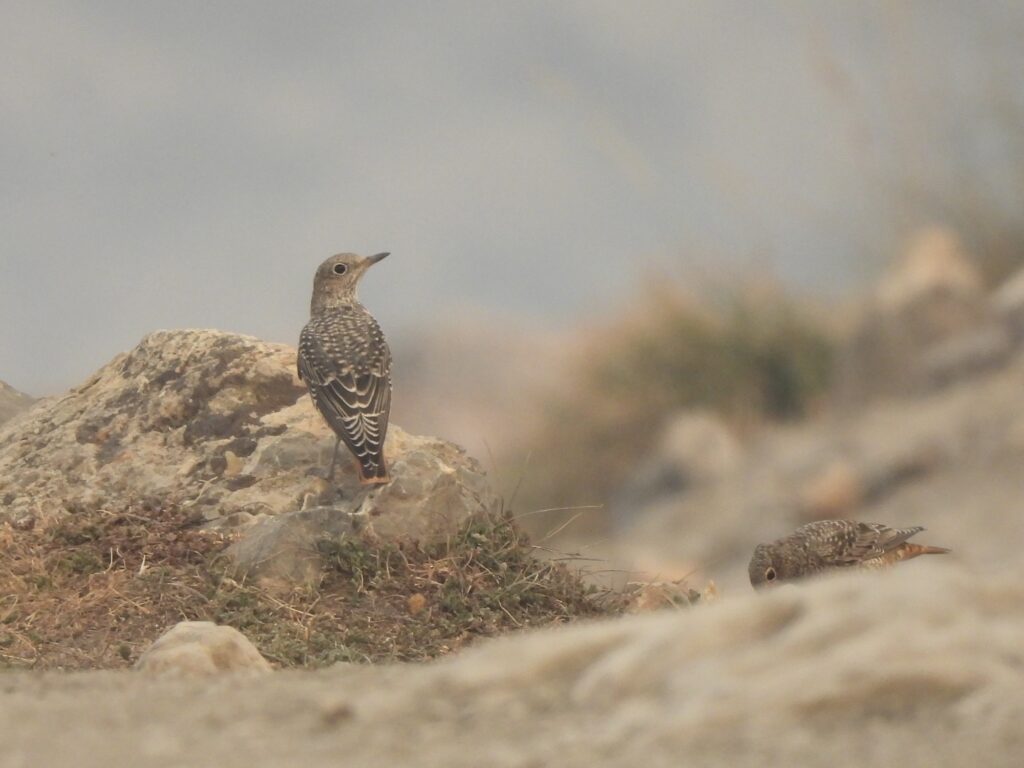
At a certain point, the number of tourists began hampering our chances of finding birds. Well past a shallow lagoon, we turned left onto a path that fewer people seemed interested in. After a few hundred meters, we spotted two chamois at very close range, just a few meters below the slope.
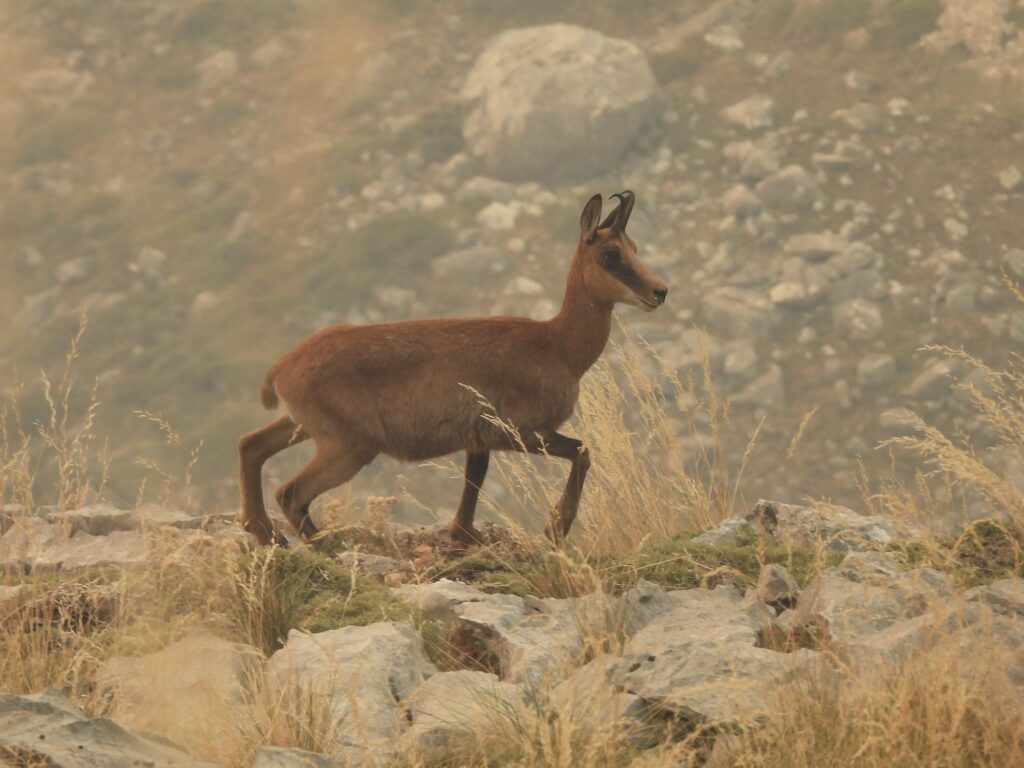
The spot looked promising, with a good stretch of grassland despite the incline, so we paused there for a while. I was glad to catch a glimpse of a snow vole (Chionomys nivalis), a high-mountain rodent I had never seen before — locally known as neverón. Meanwhile, Alpine accentors (Prunella collaris) were busy feeding their youngsters nearby.
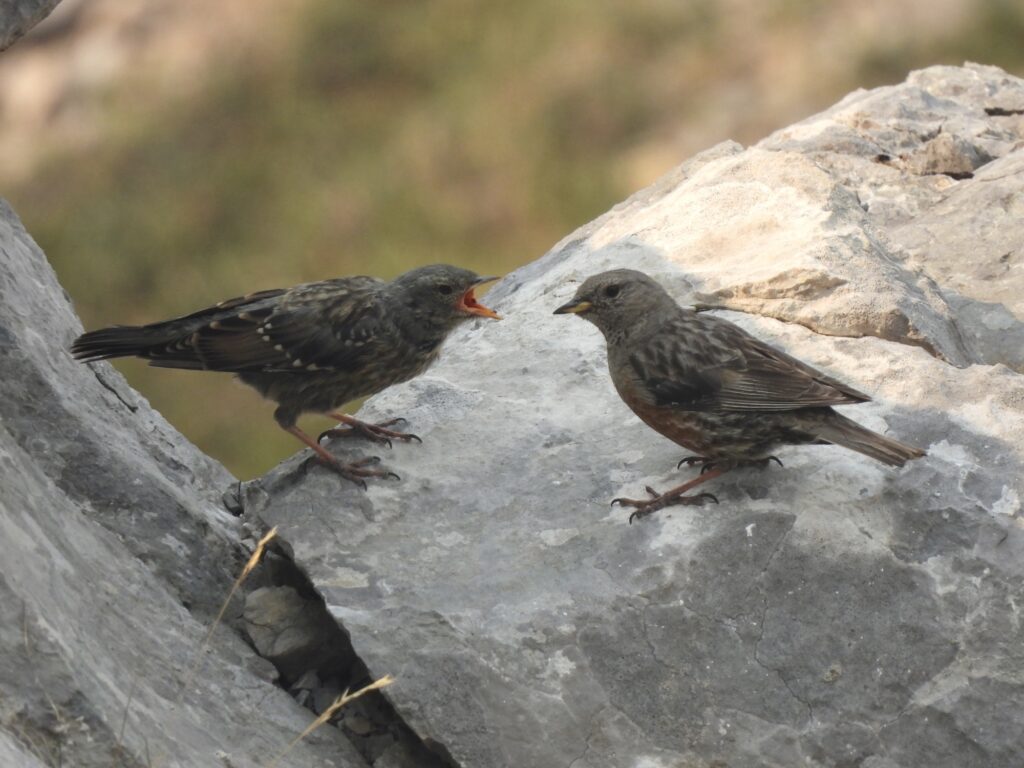
But the big surprise came when a large flock of some 40 white-winged snowfinches (Montifringilla nivalis) appeared, foraging a bit further below the slope and performing tremendous flights that showed off their striking bright-white wing patterns. The flock seemed to move between the slope and the shallow lagoon further away. Although the smog made the view somewhat harder, the entire flock suddenly flew back just a few meters above our heads as we walked downhill — just when we thought they had left for good.
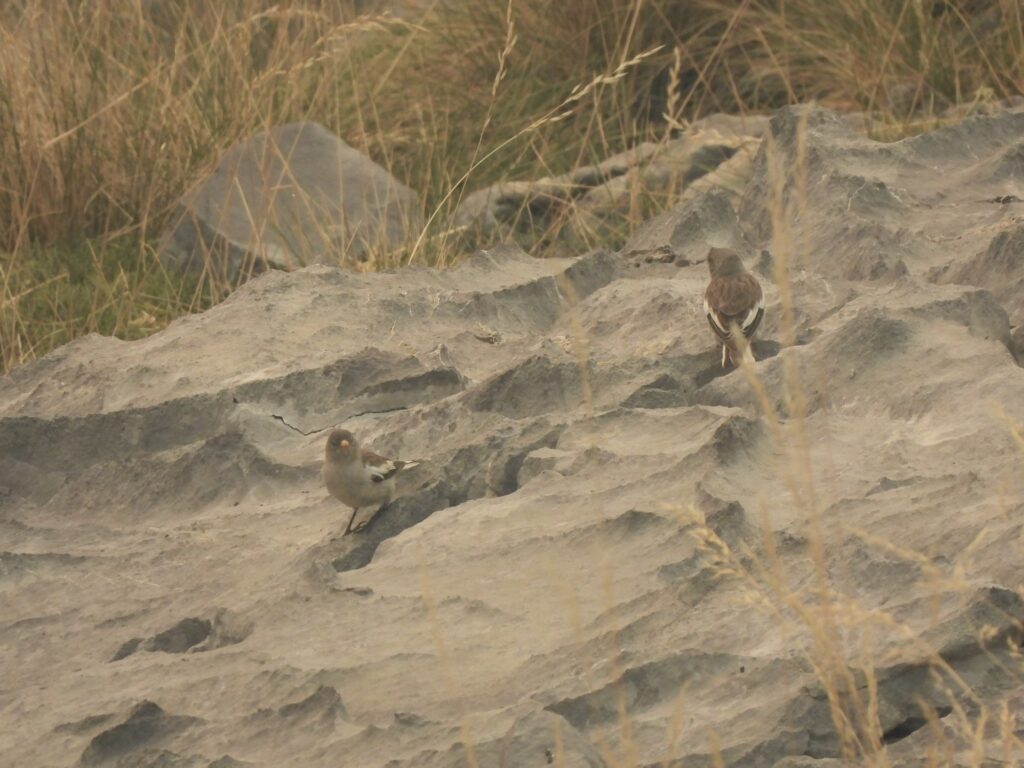
On our way back, a cooperative flock of yellow-billed choughs performed at very close range. This charismatic, social species is known to be the highest-altitude breeding and resident bird, with sightings close to the top of Mt Everest. Although they seemed to be searching for food scraps along the path, they quickly flew off as soon as a group of hikers passed by.
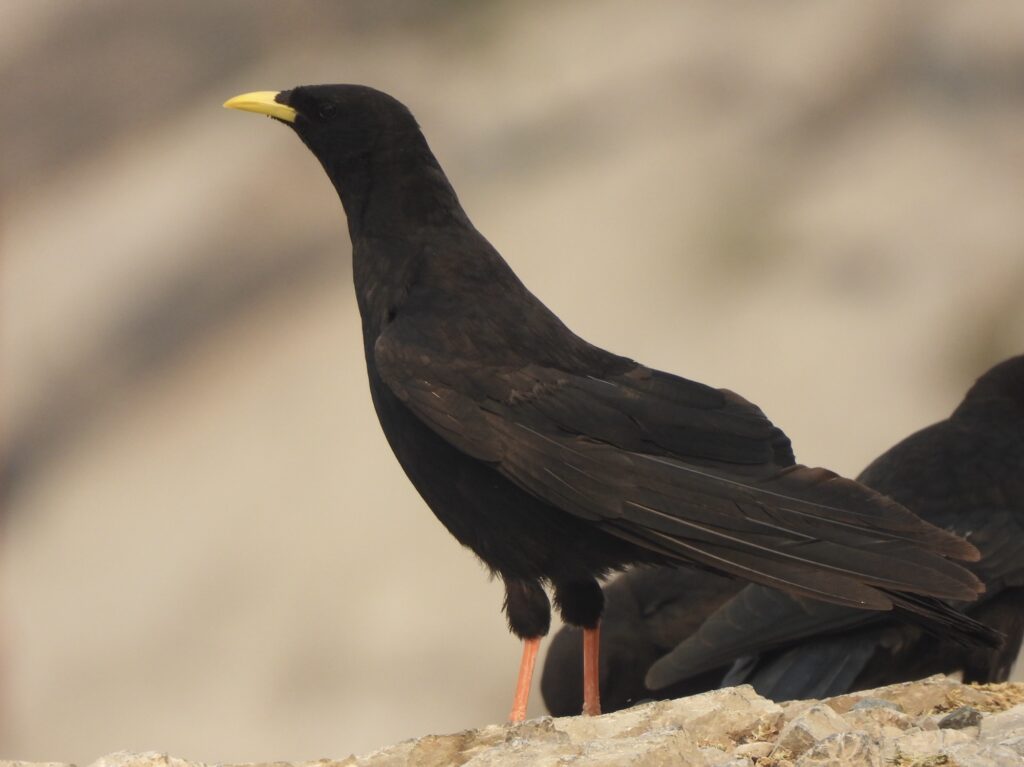
Tired and somewhat dizzy from the conditions, we were about to leave the area when emergency alarms rang on our phones. The fire situation had worsened, and the cable car service uphill was suspended. Tourists were advised to avoid outdoor recreational activities. We took the cable car downhill and spoke with the excellent staff at the Fuente Dé campsite about the possibility of staying. However, under such conditions no birds seemed active in the forest. It was as if the whole area had fallen silent, bearing witness as the nearby woodland burst into flames, with the air thick with smoke and ashes and burned leaves drifting down from the sky. We eventually left Picos de Europa that afternoon, well ahead of our original plans, and now grieve to think how close the fire came to the marvelous forests surrounding the campsite — and how much has already been lost around Picos and elsewhere.




